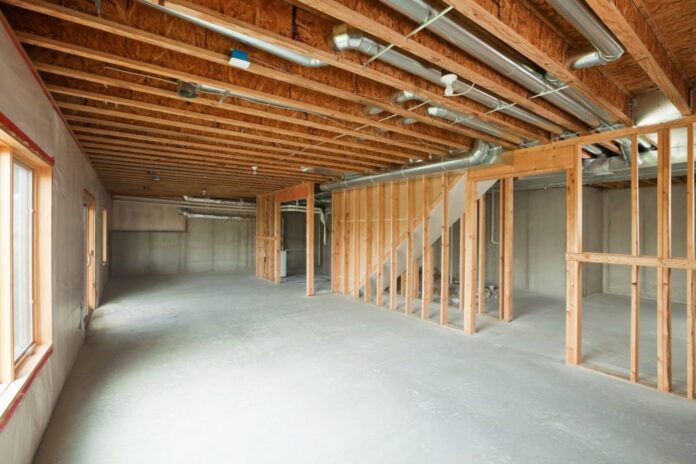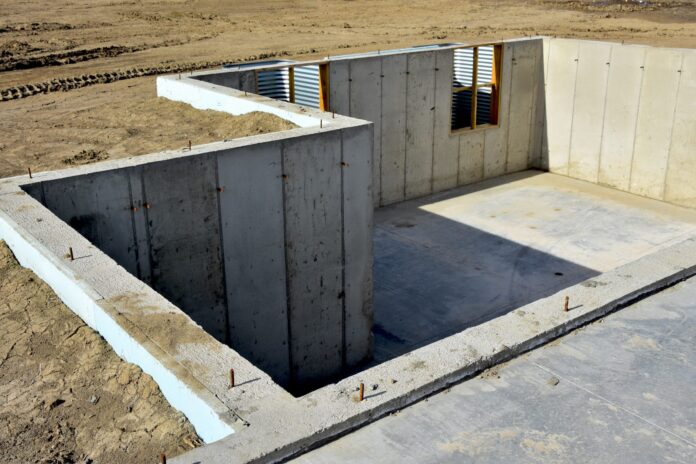When undertaking a basement renovation, it’s important to work ahead of time and be mindful of the different phases that must be taken to make the entire process flow smoothly. Laying the groundwork for the renovation will give you a better idea of what needs attention and what should be left until later.
Here are some general guidelines on laying a solid foundation before your renovations, so they go more smoothly:
1. Set Your Budget
Before you start the remodel, set a budget to work with. This will allow you to plan how much money you’ll need and whether or not those renovations should be done before or after the basement is finished.
2. Make a Plan

Draw up a basement blueprint and include what you’d like to do, where you’d like to do it, and which materials you can use. This will help with what needs to be done and provide an idea of the project’s cost. It will also allow you to divide tasks between different people so that it is completed without any stress or problems in meeting deadlines.
3. Take a Project Inventory
Talk to the contractor and determine precisely what tasks need to be completed, in addition to how much it will cost and how long it will take. Concrete work, for example, usually takes longer than drywall work because of the concrete mixing and curing process. You can also find out if the contractor has any experience with basement remodelling or knows how to do it. This will ensure that you get the best fit for you and that they are experienced enough in this field to understand how to do the job right without any problems or delays.
4. Keep Records & Provide Them to Workers

Since most DIY projects involve errors, it’s essential that you keep records of what was done and when. This will show the contractor in case there are any problems with materials or proper installation. This is also a way to compare your budget against reality so you know if you are spending more than anticipated without asking for an updated estimate each time something goes wrong or if there are any additional materials you might not have purchased but should have.
5. Stick to a Schedule
It’s easy to get busy with life and forget that you’re working on a project, but laying out a schedule for how, when, and what will be done allows you to know how much time is needed for the basement development plans you’ve laid out so far. This will also let you know if any other projects need to take priority over time. For example, if you’re waiting for the basement to be finished before you move furniture in, you won’t find yourself running out of space and unable to work in your basement.
6. Observe Your Space Before You Begin

It’s always a good idea to look at what exactly is under the flooring, walls, and ceiling so that there are no surprises later on when you begin demolition or construction. It’s also helpful if you have plans of what will be done each day so that your contractor doesn’t need to guess what needs to be done next or where certain things should go. This will prevent major problems or delays since the project was only a skeleton without any materials or details about its intended use.
7. Follow the Guidelines
Follow all of your area’s rules, safety regulations, and codes, and let the contractor know exactly what they’re responsible for in case they misjudge any of it while working. This way, you won’t have to worry about not meeting codes or causing damage to your home or property since you have a contract that lays out what will be done and when it will be done by who. This will also prevent delays in the project schedule because contractors have deadlines that need attention, so knowing them ahead of time will allow them to book their other jobs around yours so that everyone meets their deadline with peace of mind.
8. Plan for the Long Term

Basement designs should be flexible enough for changes in your home’s needs without affecting other parts of the house, like the foundation or subfloors. This can be done by using materials that are more resistant to damage and rot over time so that they won’t need to be replaced later on. This way, you’ll be able to redo the basement into something that works best for your family without putting the rest of your home at risk.
Home improvements can be a fun, educational, and profitable experience, so the more you plan, the better things will go when it comes to basement development.




